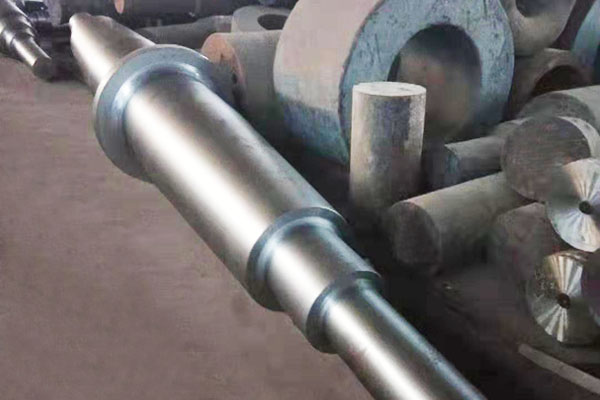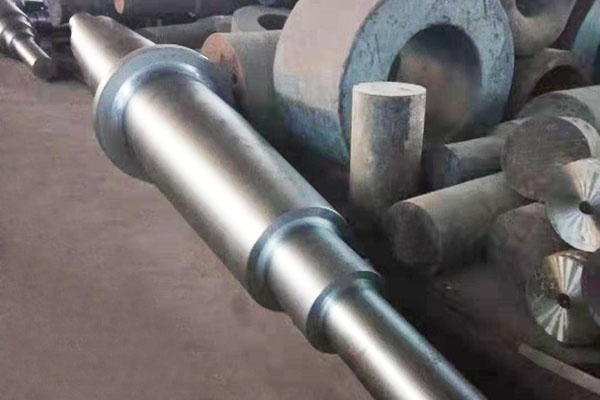

余热正火(退火)
⑴得当掌握锻件进炉前的温度。当零件温度较高时需求对锻件进行吹风冷却,使零件温度降低到所需求的正火温度,同时热处分炉功率需求有一定的充裕,开始制造前和少量锻件温度低时进行加热。
⑵确定合理保温时间。保温时间过长会会造成晶粒粗壮,保温时间过短会造成构造转变不充裕。可凭据锻件质料、形状和尺寸通过实验确定。
余热等温正火
⑴ 铸造后锻件温度掌握。锻件成形后的温度必需在Ar3(对亚共析钢)以上,锻后零件温度稳定时可接纳干脆急冷的方法;锻后零件温度颠簸较大或锻件截面变更大时,必需增加均温历程,急冷前使零件温度均匀一致,否则会造成急冷后锻件或不同截面温度相差大,产生非常构造(贝氏体或马氏体)。
⑵ 急冷冷却速率掌握。急冷工序中要求锻件快速冷却,同时冷却后统一锻件和同批锻件温度均匀一致(或相近)。同时需求对急冷速率加以掌握,过快的急冷速率会在锻件构造中产生魏氏构造。一般急冷速率掌握在30~42℃/min。
⑶ 急冷后温度掌握。急冷后必需包管锻件温度在珠光体转变区,不能低于贝氏体转变开始温度(Bs),否则构造中会出现贝氏体(或粒状贝氏体)构造;如急冷后温度过高会造成先共析铁素体量增加,构造转变后珠光体片层间距大,造成零件硬度低。锻件急冷后温度一般掌握在质料Bs温度以上在80~100℃。
⑷ 等温温度的选定。等温温度的崎岖干脆影响到等温正火后锻件的硬度,等温温度高则硬度低,等温温度低则硬度高。等温温度一般为锻件质料Bs温度以上50~80℃,具体温度需凭据锻件的质料、形状经实验进行确定。
⑸ 等温保温时间确凿定。珠光体转变产生在等温历程中,是以必需有足够的保温时间,如等温时间过短会造成过冷奥氏体没有一切转变为珠光体,在随后的冷却历程中转变为贝氏体或马氏体,造成等温处分后构造分歧格和硬度高。等温时间可凭据质料的等温转变曲线进行初步确定,并凭据实验情况进行调整。
锻件厂家供应哪家好,就找唐山盛通锻造有限公司。
Waste heat normalization (annealing)
(1) It is necessary to grasp the temperature before the forging is put into the furnace. When the temperature of the part is high, the forging is required to be blown to cool, so that the temperature of the part is lowered to the required normalizing temperature, and the power demand of the heat dividing furnace is sufficient, and heating is performed before the start of manufacturing and when the temperature of a small amount of forging is low.
(2) Determine the reasonable holding time. If the holding time is too long, the crystal grains will be thick and the holding time will be too short, which will cause the structural transformation to be insufficient. The material, shape and size of the forging can be determined experimentally.
Isothermal isotherm
(1) Master temperature of forging after casting. The temperature after forming the forging must be above Ar3 (for the sub-eutectoid steel). When the temperature of the forged part is stable, the method of quenching and quenching can be accepted. When the temperature of the forged part is large or the section of the forging is changed greatly, the temperature history must be increased. Make the temperature of the parts uniform before quenching, otherwise the forgings or different cross-section temperatures will be greatly different after quenching, resulting in very structural (bainite or martensite).
(2) The quenching cooling rate is mastered. In the quenching process, the forgings are required to be rapidly cooled, and at the same time, the uniform forgings and the same batch of forgings are uniformly uniform (or similar) after cooling. At the same time, the demand for the quenching rate is mastered, and the too fast quenching rate will produce the Wei's structure in the forging structure. Generally, the quenching rate is controlled at 30 to 42 ° C / min.
(3) Temperature control after quenching. After quenching, the forging temperature must be in the pearlite transformation zone, and should not be lower than the bainite transformation starting temperature (Bs). Otherwise, the bainite (or granular bainite) structure will appear in the structure; if the temperature is too high after quenching, it will cause The amount of ferrite is increased first, and the spacing of the pearlite sheets after the structural transformation is large, resulting in low hardness of the parts. After the forging is quenched, the temperature is generally above 80 ° C to 100 ° C above the Bs temperature.
(4) Selection of isothermal temperature. The roughness of the isothermal temperature simply affects the hardness of the forged part after isothermal normalizing, the hardness is low when the isothermal temperature is high, and the hardness is high when the isothermal temperature is low. The isothermal temperature is generally 50 to 80 ° C above the Bs temperature of the forging material. The specific temperature needs to be determined experimentally according to the material and shape of the forging.
(5) The isothermal holding time is fixed. The pearlite transformation occurs in the isothermal history, so it is necessary to have sufficient holding time. If the isothermal time is too short, the supercooled austenite will not be transformed into pearlite, and it will be transformed into bainite or horse in the subsequent cooling process. The body, causing the isothermal division to have a divergent lattice and a high hardness. The isothermal time can be initially determined by the isothermal transformation curve of the material and adjusted according to the experimental conditions.
